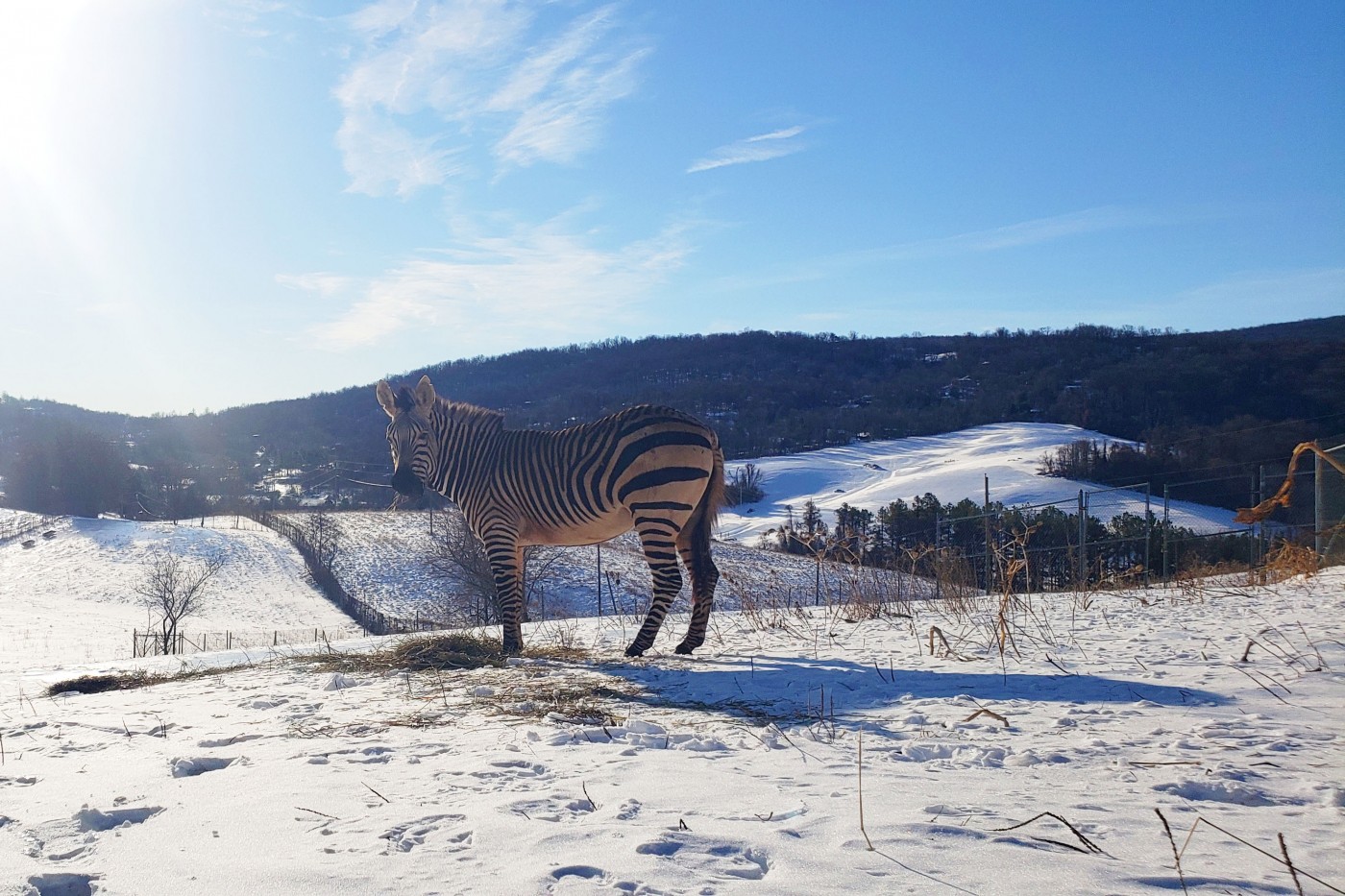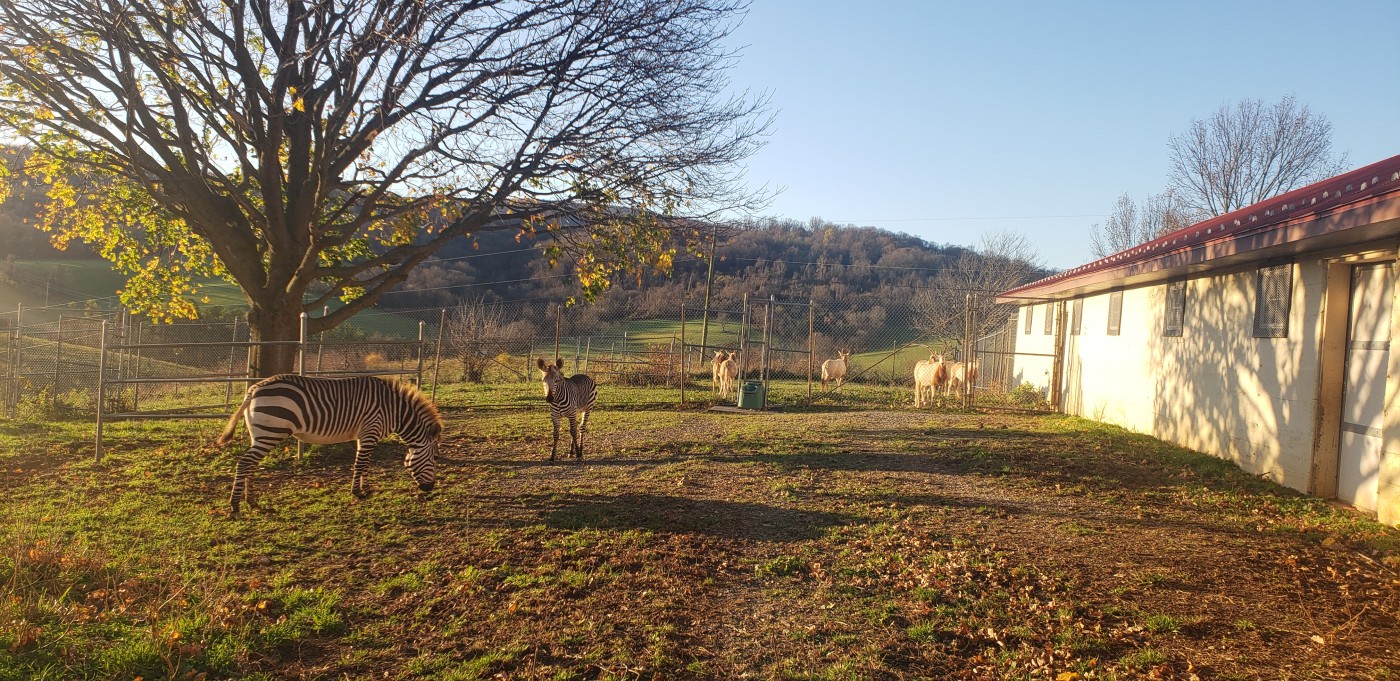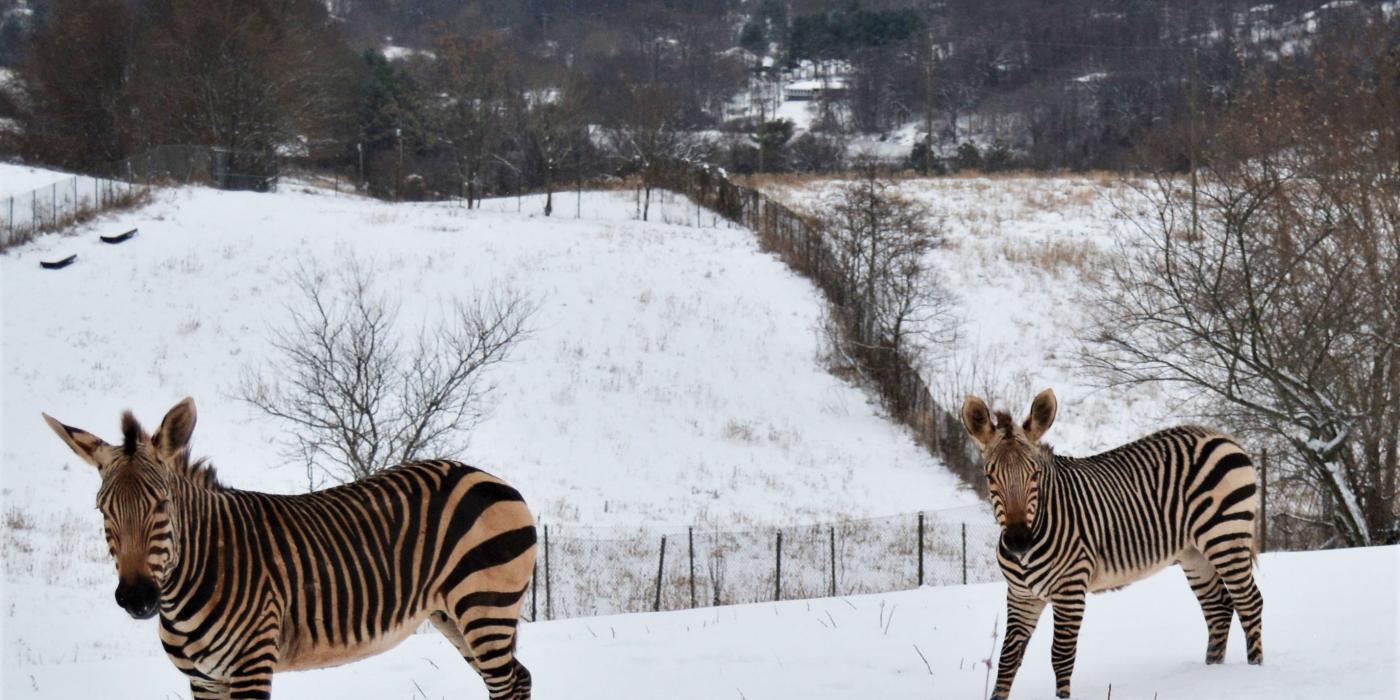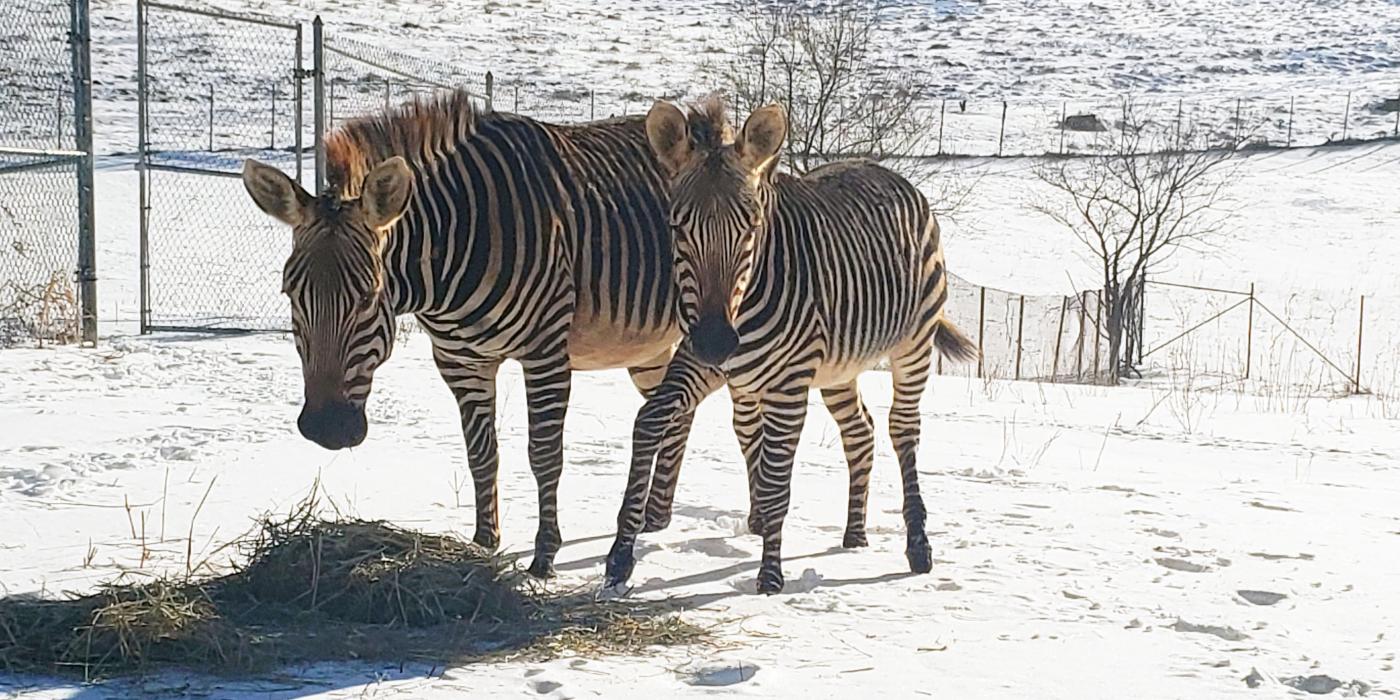Snow and Stripes: A Zebra Update
Our friends at the Smithsonian’s National Zoo in Washington, D.C., experienced their first significant snowfall of the year Jan. 31. While three of their black-and-white animals stole the internet’s hearts with their playful antics, our trio of Hartmann’s mountain zebras were celebrating their namesake holiday: International Zebra Day!
Here in the foothills of the Shenandoah, we see a decent amount of snow every winter. The latest storm dropped between eight and 10 inches of snow at the Smithsonian Conservation Biology Institute. You may be surprised to know that Hartmann’s mountain zebras—which are native to the dry mountain habitats of Namibia—are fairly tolerant of the cold. Even though they have access to a heated barn and stalls filled with fresh hay bedding, our zebra herd is often already outside by the time we arrive and begin our day. Only when the snow is very deep do our zebras choose to spend more time inside eating than outside grazing in their pastures.
On Feb. 2, our youngest zebra, Yipes, turned 7 months old. It is hard to believe that he is already a juvenile! As a newborn colt, he stuck close by his mother Mackenzie’s side. Just like her, Yipes was quite cautious and aloof and preferred to play by plucking pieces of grass and tossing them in the air. Over the past few months, however, we have seen him become much more rambunctious and goofy like his father, Rogan.

One of Yipes’ favorite pastimes is roughhousing with his mother and their herd mate, Xolani. He spends as much time interacting with her as he does his mother, play-fighting and chasing them around their pasture. Recently, our herd welcomed some new scimitar-horned oryx neighbors. They seem to be interested in one another and spend a good amount of time grazing at the fence line together.
I mentioned in my last update that Yipes tended to be nervous around enrichment items and preferred to keep his distance. Now, he is much more confident and bold. Yipes will walk right up to them, especially the puzzle feeders that are filled with his favorite pellets!
That food-motivation comes in handy, as we continue to teach Yipes behaviors that allow him to voluntarily participate in his own health care. Thus far, he has done really well with moving through the various chute systems in the barn as well as walking across the scale. He weighs approximately 160 kilograms, or 352 pounds!

To encourage Yipes to voluntarily participate in these training sessions, he receives part of his daily pellet rations and cinnamon biscuits as a reward. I’m happy to report that he does these behaviors calmly and without hesitation. As he grows, we will add more behaviors to his repertoire. For now, though, it is most important that we establish a trusting relationship with Yipes so we can monitor his health and ensure he is growing and making good gains.
As we look ahead to spring, we hope to once again breed Rogan with Mackenzie and Xolani. If introductions with our females are successful, we may even be able to arrange for Rogan to meet his son for the first time! We will be sure to keep you posted as the excitement unfolds.
This story was featured in the February 2021 issue of National Zoo News. Want to learn more about what being an animal keeper entails? Check out animal keeper Regina Bakely’s update, “How Do You Train a Zebra?”


